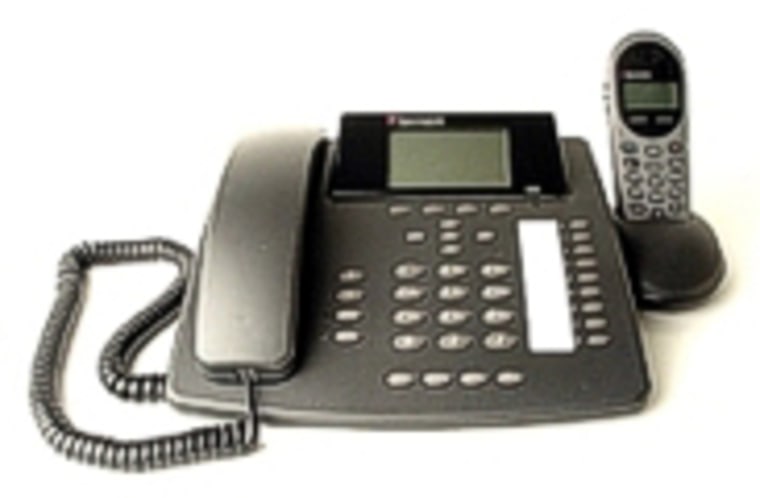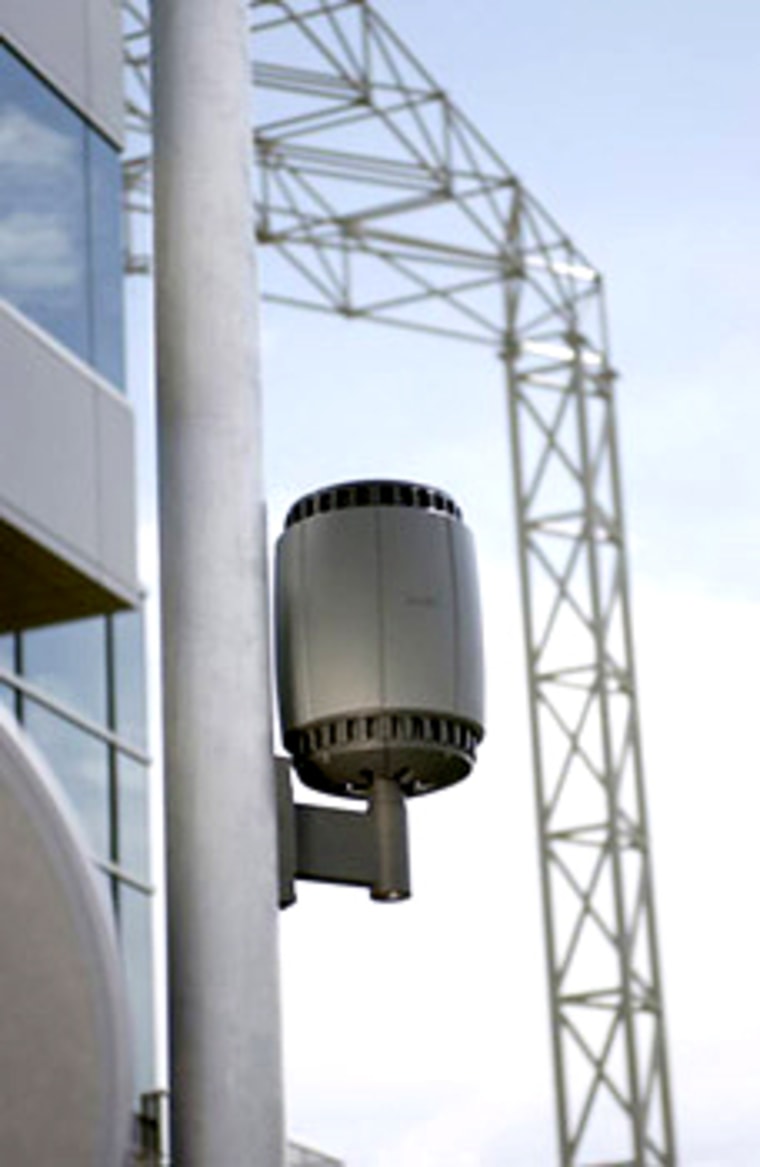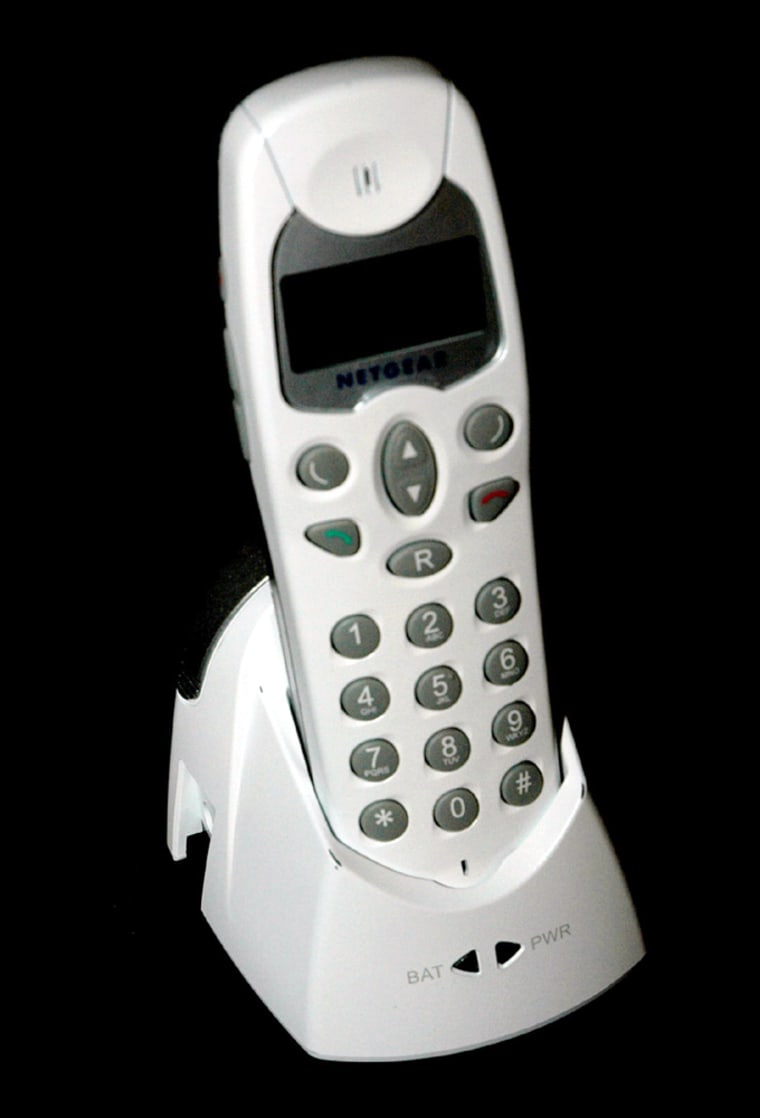Cell phones are changing. In the future, when you dial a number it will connect exactly as you expect it to — and you’ll still receive calls automatically. But how the phone connects to its network is about to change.
Don’t worry, you won’t feel a thing. There’s a good chance that your connectivity will change for the better. That means better sounding conversations and fewer dropped calls. All thanks to WiFi.
The same wireless technology that allows you to connect your computer to the Internet at home, at work, and even at coffee houses and airports is about to go wide. Here in San Francisco and in other cities like Philadelphia officials have made a commitment to build an infrastructure allowing everyone to wirelessly connect to the Web anywhere within city limits.
That’s sounds great for computers and PDAs — but what does that have to do with cellular phones? When you add VoIP — Voice over Internet Protocol - technology to the mix you can use that wide area WiFi service to carry phone calls. They’re calling it VoWiFi.
I’ve told you about VoIP services like Vonage. My Vonage modem plugs into my high-speed cable modem and provides me with amazingly good telephone service for less than $25 per month. That’s for all my calls, incoming and outgoing, anywhere within the U.S. and Canada. International calls coast pennies per minute on Vonage.

I have a Siemens cordless phone system plugged into the Vonage modem. That means when someone calls me on that line the cordless phones ring throughout my home. It’s very cool, but things are changing.
The first step in this evolution is coming soon to your home. Here at Cellular Telecommunications and Internet Association convention, companies are showing new models that combine cable modems, VoIP modems and WiFi access points in one, small container. And other companies are producing VoWiFi phones that connect to these boxes, automatically configuring themselves.
VoIP phones like this aren’t really new. A representative from SpectraLink told me these types of phones have been on the market since 1999. It’s just now that all the other technology is catching up.
SpectraLink, AirMagnet and Chantry Networks are providing free WiFi and VoIP services for everyone attending CTIA. More importantly, they demonstrated how a VoWiFi phone could connect to a hotel’s wireless network to reach a VoIP modem on another network via the Internet. Finally that other network completed the call.
What all this means is that VoIP phones can allow you to make phone calls by using WiFi networks outside of your home – maybe inside a coffee house or an airport. Very cool.

But, that’s not all. I also saw what companies like BelAir Networks have up their sleeves. BelAir makes what are called wide-area WiFi products. That means transmitters, receivers, antennas to bring WiFi service to the streets of your neighborhood, town, or city. These small devices sit on street lamp posts, connect to the Internet via fiber cables, and will provide very high-speed wireless access to people walking in the street, driving in their cars and in their homes. They remind me of the old Ricochet network which still hangs from New York City lampposts.
I commented to Bernard Herscovich, President and CEO of BelAir that the local cable and DSL providers might not like the new competition. He said those providers are lining up to join forces to spread wireless services in all directions.
You can understand why — it will means new services that Cable/DSL companies can sell to consumers. Hopefully they won’t take advantage and charge ridiculous prices.
On the other hand, think of what it means to your life. Any device (computer, PDA, phone, etc.) that needs to connect to the Web can do so wirelessly — from anywhere in the neighborhood. That means fewer boxes to buy/configure/upgrade.
It also means that WiFi will be floating through the air just like cellular phone service. That’s why we’re starting to hear about phone handsets that will contain both cellular and WiFi circuits. These new phones will be able to automatically choose which network provides a stronger signal — providing us with seamless phone service.
If this new generation phone services is as good as it looks on paper, and is affordably priced, why would you need a regular, old-fashioned telephone? Now, let’s say that new phone is a smartphone allowing you to get your e-mail, browse the Web, IM, play games, and even stream TV over a seamless high-speed connection. The word from CTIA is that the future isn’t all that far away.
